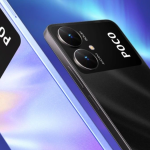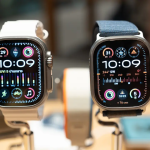Apple is said to be taking a different approach to the foldable smartphone market, with reports suggesting that the company is reworking its foldable iPhone display technology to address one of the most common complaints with foldables: the crease.
Moving From On-Cell to In-Cell Displays
According to Mark Gurman’s Power On newsletter, Apple initially planned to use on-cell touch sensors in its first foldable iPhone, the same technology Samsung relies on for its Galaxy Z Fold series. However, on-cell displays create air gaps between the screen and its cover, making creases more visible.
To avoid that, Apple has reportedly shifted to in-cell display technology. Unlike on-cell panels, which place touch electrodes on top of the OLED layer, in-cell integrates the touch layer directly into the TFT layer of the display. Benefits include:
- A thinner display
- Less noticeable crease
- Better touch responsiveness
This rethinking reflects Apple’s strategy of learning from competitors’ shortcomings rather than rushing to market.
Challenges With In-Cell Tech
So, why didn’t Apple choose in-cell from the start? The challenge lies in durability. In-cell touch sensors are more fragile on flexible displays than on rigid ones, increasing the risk of damage over time. For a device expected to cost as much as $1,800 to $2,400, Apple cannot afford reliability issues.
That said, new reports suggest Apple has found a solution that could make in-cell displays durable enough for foldable use — a key milestone for its first folding iPhone.
Specs and Expectations
If leaks are accurate, Apple’s first foldable iPhone will launch in 2026. Display production is already underway, with early details hinting at:
- 5.5-inch cover display (smaller than Samsung’s 6.5-inch Z Fold 7)
- 7.8-inch inner foldable display (versus Samsung’s 8-inch)
- Price range between $1,800 and $2,400
While the rumored foldable may be slightly more compact than Samsung’s offering, the emphasis seems to be on build quality and design refinement, particularly in reducing display creases.
Apple Learns From the Competition
Samsung debuted its first foldable in 2019. Six years later, Apple still hasn’t launched its own, preferring to refine the technology before stepping into the market. This approach suggests Apple doesn’t just want “another foldable” — it wants to deliver a polished, premium product that corrects many of the flaws seen in first-generation devices.
If the foldable iPhone arrives in 2026 as expected, it will be one of Apple’s most expensive devices ever, yet also among its most ambitious. By tackling critical design limitations like creased displays and touch sensitivity, Apple appears poised to set a new standard in the foldable phone segment.





